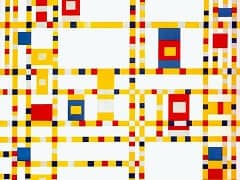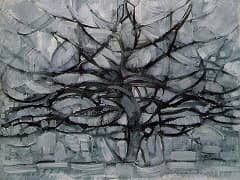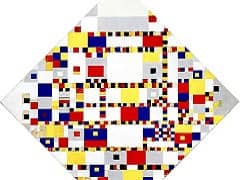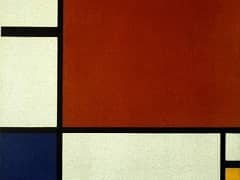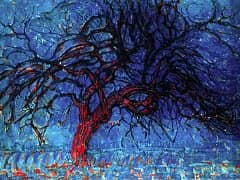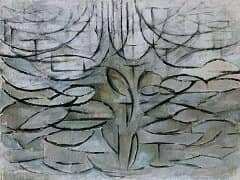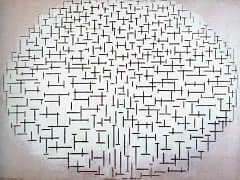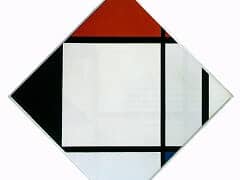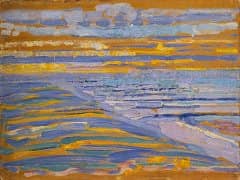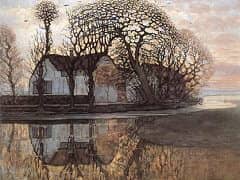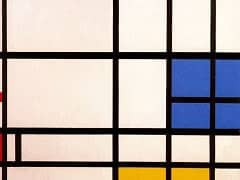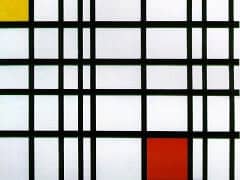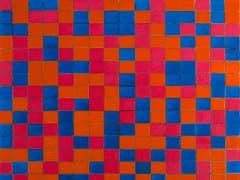Lozenge Composition with Yellow, Black, Blue, Red, and Gray, 1921 by Piet Mondrian
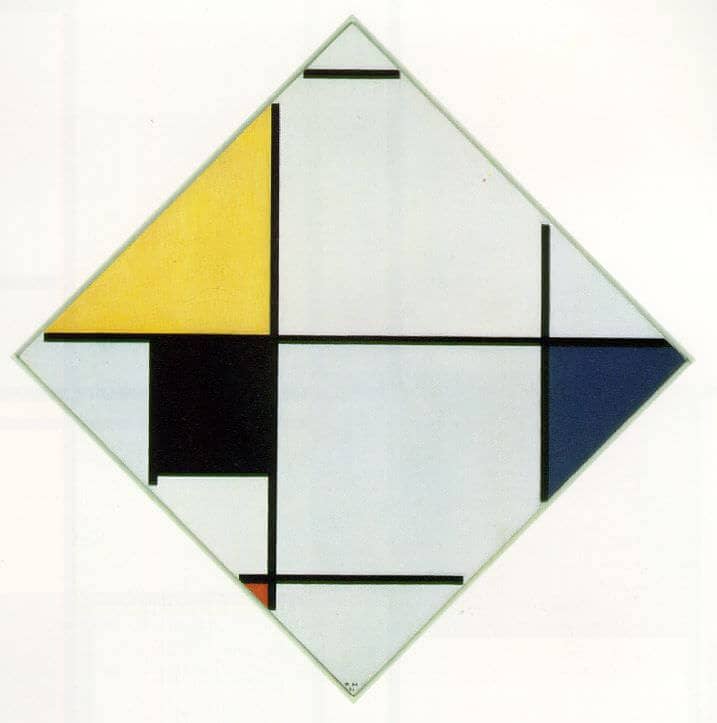
Although Piet Mondrian's abstractions may seem far removed from nature, his basic vision was rooted in landscape, especially the flat geography of his native Holland. Beginning with his earliest naturalistic landscapes, he reduced natural forms to their simplest linear and colored equivalents in order to suggest their unity and order. Eventually he eliminated such forms altogether, developing a pure visual language of verticals, horizontals, and primary colors that he believed expressed universal forces.
In Lozenge Composition with Yellow, Black, Blue, Red, and Gray, Mondrian rotated a square canvas to create a dynamic relationship between the rectilinear composition and the diagonal lines of the edges of the canvas. Deceptively simple, his works are the result of constant adjustment to achieve absolute balance and harmony, and they reveal an exacting attention to the subtle relations between lines, shapes, and colors. The artist hoped that his paintings would point the way to a utopian future. This goal was first formulated in Holland around 1916-17 by Mondrian and a small group of like-minded artists and architects who collectively referred to their aesthetic as De Stijl (The Style). Their ideas have been extraordinarily influential for all aspects of modern design, from architecture and fashion to household objects.

